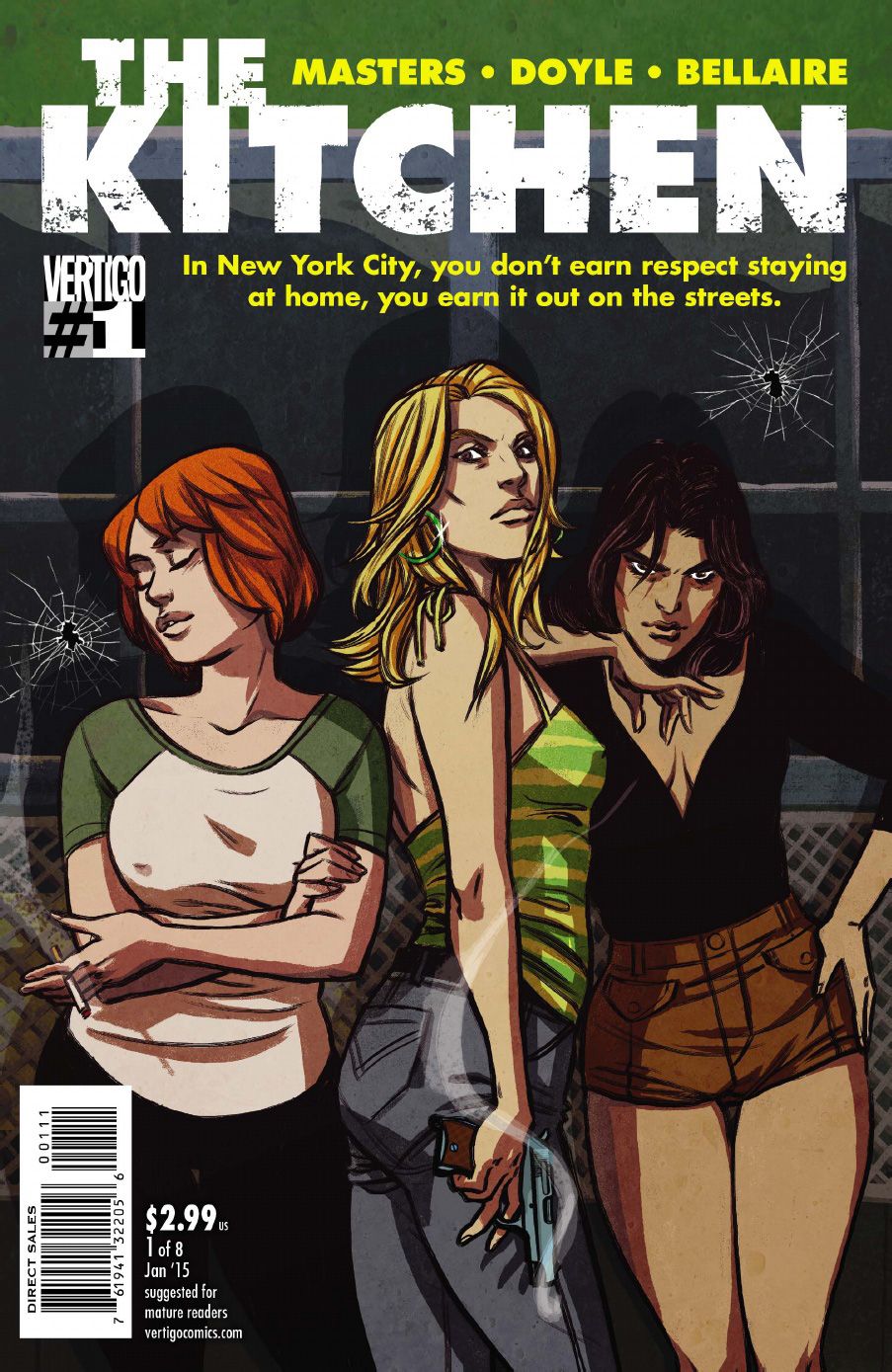The title of "The Kitchen" #1 by Ollie Masters and Ming Doyle refers to Hell's Kitchen in the seventies, back when it still had a reputation for being gritty and rough, when it was still a bastion of working-class Irish Americans.
Through Masters' script and Doyle's fine eye for details, Hell's Kitchen immediately makes an impression even on the first page, where a brawl that moves outside a pub turns even uglier when Masters lets the reader know through dialogue that this is business, not pleasure. Doyle doesn't skimp on backgrounds, and from the kitchen walls to the hairstyles and street signs, there's a wonderful bounty of accurate period texture that makes the story richer.
Masters' storytelling is succinct and the plot is a forward-moving arrow of action and reaction, without any info dumps. The action is gripping, but the setting is better developed than the characters in "The Kitchen" #1. Kath is the clear primary protagonist and gets the most attention from Masters' script. Raven and Angie are much more passive and don't show much personality other than being more timid than Kath. Like Charlie's Angels, they are a classic threesome of a redhead, a blonde and a brunette. While this is cute, it's also stale and it detracts from the realism, since threesomes like this occur in film and television far more than in real life. However, the hair colors do reinforce the notion that these women are a team now that their husbands all went to prison at the same time.
Kath is shown to be like her husband, someone who, in Masters' words, "imposes" themselves on the world. This is also too pat, that the natural leader of the family would be married to another strong personality, but it makes more sense when Masters uses text boxes to tell a story about Kath and Jimmy's first date, during which Jimmy stabs a man to make a point. Instead of being appalled, Kath is impressed by Jimmy's strength -- like attracting like.
Kath's retaliation is similarly extreme when she feels insulted, and she also uses a racist epithet. Up until those events, Kath is a sympathetic lead character, but afterwards, it's hard to know whether to root for her or not. Her competence and leadership are admirable, but her racism and her belief in her husband's code of the law of the jungle are not, even though these points add realism.
The dialogue and the action are never dull. Doyle's page and panel compositions and facial expressions are excellent. The wrinkle of irritation that flits across Raven's forehead when she reminds Kath that not everyone has money is perfectly rendered. However, Doyle's linework is stiff in places even while her transitions are smooth. The wire-like effect of her inking is beautiful, but it works better for static objects than for hair or for faces. This isn't uniform across "The Kitchen" #1, though. Franky Castellano's face is drawn with beautiful movement in it. There are some of Doyle's sketches included as bonus material in letters pages, and it feels like she sometimes overworks her initial drawings. But at her best, she develops fine linework without losing the brushy energy of her sketches.
Bellaire's coloring skews towards warm tones. Her hue choices for Raven's kitchen are excellent, but the rest of the issue feels a little muddy. This is in keeping with the gritty, dirty setting, but it feels like there's too much orange and warm gray in the palette, which mutes some of the detail in Doyle's pencils.
The twist at the ending is perfunctory and expected. The story's only real twist is that the women are filling their husband's shoes like Rosie the Riveter, but in another kind of war. It's weirdly feminist in that Kath may be capable of being a loan shark, but that doesn't change the right and wrong of her actions. Masters and Doyle have succeeded in creating a vivid setting and strong pacing in "The Kitchen" #1, but only further issues will reveal if the characters and the plot will develop more substance.

